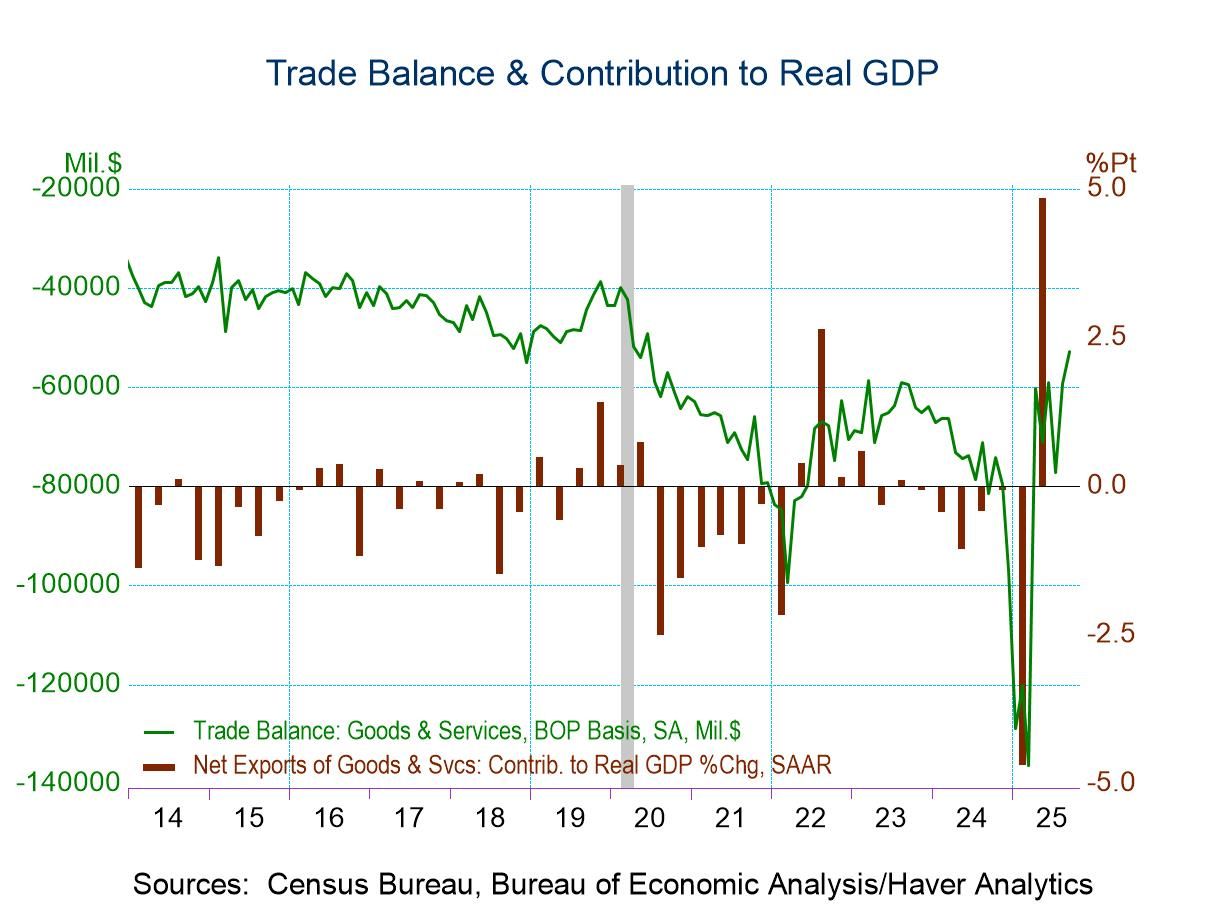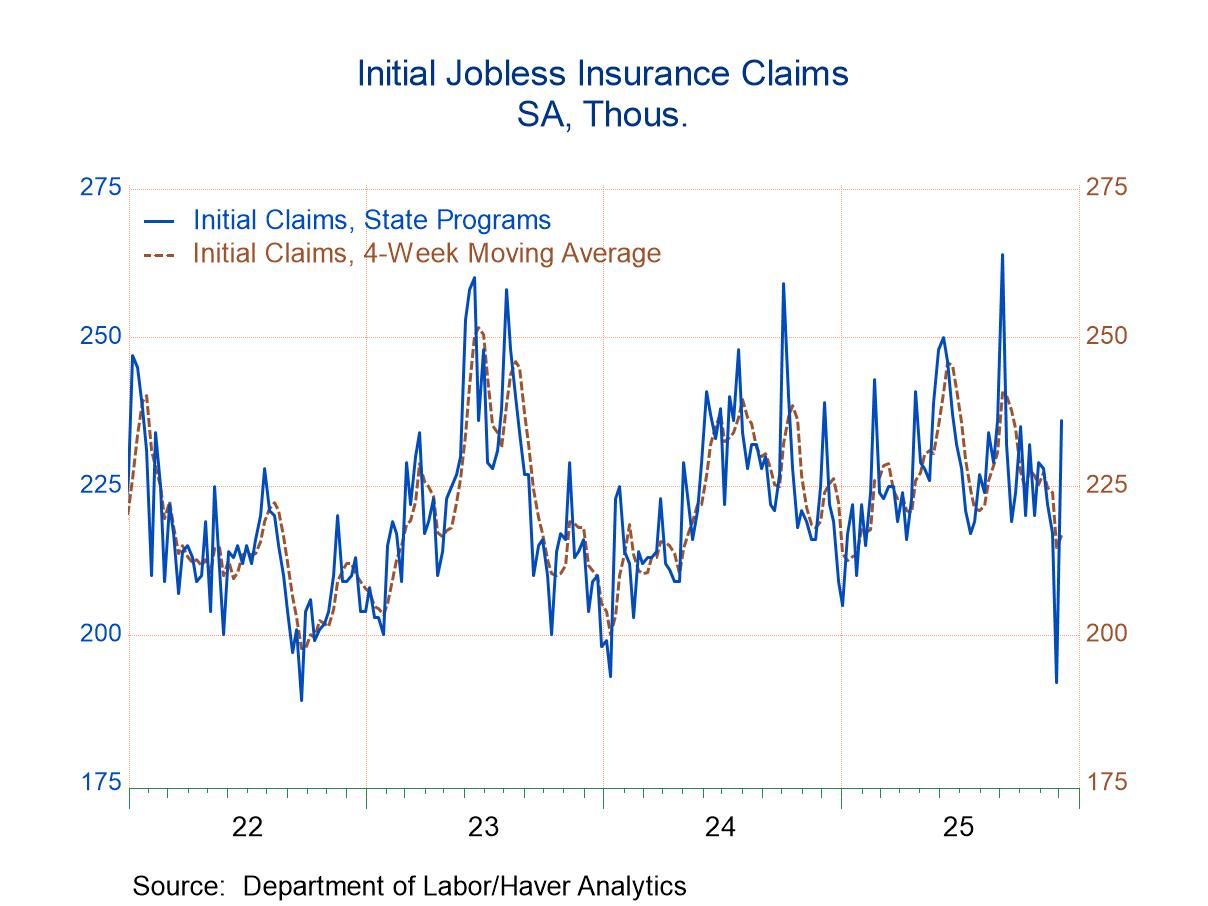ISM Manufacturing Index Declined in December
Summary
- Manufacturing activity grew at a softer pace in December than in November.
- A drop in supplier delivery performance indicates a quicker pace of product delivery.
- Sharply lower prices paid point to declining pricing power.


The Institute for Supply Management (ISM) reported that its Composite Index of Manufacturing Sector Activity declined to 58.7 in December from 61.1 during November. The high of 64.7 for the year was reached in March. A level of 60.3 had been expected in the Action Economics Forecast Survey. During the last 15 years, there has been a 41% correlation between the composite index and the quarterly change in real GDP.
The ISM indicated, "The U.S. manufacturing sector remains in a demand-driven, supply chain-constrained environment, with indications of improvements in labor resources and supplier delivery performance. Shortages of critical lowest-tier materials, high commodity prices and difficulties in transporting products continue to plague reliable consumption."
The production index dropped to 59.2 in December from 61.5 in November. A lessened 25.6% (NSA) of respondents reported higher production, while 17.4% reported lower production, up from 12.4% in November. The new orders index edged down to 60.4 in December from 61.5 in November. The supplier delivery series dropped to 64.9, its lowest level for the year and from 72.2 in November, indicating quicker product delivery speeds. The inventories index eased to 54.7 from 56.8 in November.
The employment index rose to 54.2 in December from 53.3 during November. A lessened 15.5% (NSA) of respondents reported more hiring and a lessened 12.3% reported a decline in jobs.
The prices paid index declined sharply to 68.2 in December from 82.4 in November and remained well below the June high of 92.1. A lessened 47.4% (NSA) of respondents reported higher prices while an increased 11.0% reported price declines.
In other ISM series not included in the composite, the order backlog figure rose to 62.8 in December from 61.9 (NSA) in November and remained well below the high of 70.6 in May. The new export measure edged lower to 53.6 from 54.0 in November and remained down from a November 2020 high of 57.8. The imports index rose to 53.8 in December from 52.6 in November.
The ISM figures are based on responses from over 400 manufacturing purchasing executives from 20 industries, which correspond to their contribution to GDP in 50 states. These data are diffusion indexes where a reading above 50 indicates expansion. The figures from the Institute for Supply Management can be found in Haver's USECON database; further detail is found in the SURVEYS database. The expectations number is available in Haver's AS1REPNA database.


Kathleen Stephansen, CBE
AuthorMore in Author Profile »Kathleen Stephansen is a Senior Economist for Haver Analytics and an Independent Trustee for the EQAT/VIP/1290 Trust Funds, encompassing the US mutual funds sponsored by the Equitable Life Insurance Company. She is a former Chief Economist of Huawei Technologies USA, Senior Economic Advisor to the Boston Consulting Group, Chief Economist of the American International Group (AIG) and AIG Asset Management’s Senior Strategist and Global Head of Sovereign Research. Prior to joining AIG in 2010, Kathleen held various positions as Chief Economist or Head of Global Research at Aladdin Capital Holdings, Credit Suisse and Donaldson, Lufkin and Jenrette Securities Corporation.
Kathleen serves on the boards of the Global Interdependence Center (GIC), as Vice-Chair of the GIC College of Central Bankers, is the Treasurer for Economists for Peace and Security (EPS) and is a former board member of the National Association of Business Economics (NABE). She is a member of Chatham House and the Economic Club of New York. She holds an undergraduate degree in economics from the Universite Catholique de Louvain and graduate degrees in economics from the University of New Hampshire (MA) and the London School of Economics (PhD abd).





 Global
Global
